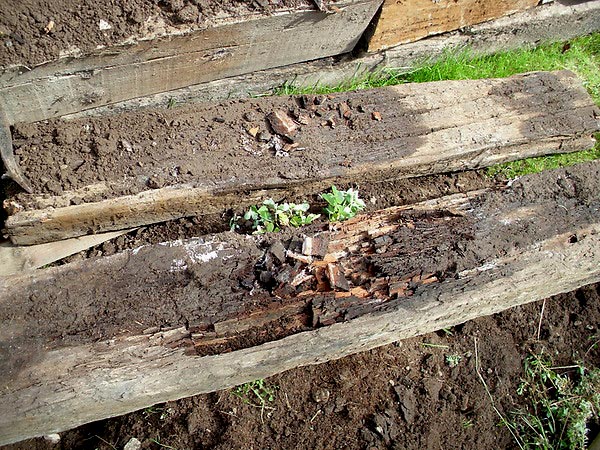Railway sleepers are an accessible, visually appealing, and cost-effective way to add rustic charm to your outdoor living space. You can use this sturdy hardwood to build a range of beautiful and functional structures like retaining walls, garden beds, decking, steps, and even letterbox stands.
Unfortunately, this convenience comes at a price. How so? Well, like most wooden products, railway sleepers are an attractive food source for termites. Especially for some the most common termite species found in Australia like the Coptotermes, Schedorhinotermes and Nasutitermes.
Let’s take a closer look at why this is the case and what it means for you.
What are railway sleepers?
Traditionally, railway sleepers were made of hardwood, also known as railroad ties, a vital component of railroad tracks. These long planks of wood lay between two rail tracks, its purpose is to support the rail track by keeping it upright and stable as trains cross over the tracks.

Newer more modern materials soon replaced the old railway sleepers which were then sold on to the public. These old untreated railway sleepers were cleaned up and reused in a variety of ways from furniture to outdoor building structures and then became extremely popular for retaining walls and garden edging. Unfortunately, they often fail to mention that wooden railway sleepers can attract termites.
Today you can buy treated hardwood sleepers at timber and garden supply stores, still commonly used for retaining walls garden edges etc.
However all Non treated and Treated Hardwood railway sleepers are a cellulous material and always attracted Termites!
New treated hardwood railway sleepers are only treated to a 10% outer edge. Once these sleepers are cut, they are No longer are protected by the treated edge.
Over time as these sleepers become weathered and degrade, creating an undetectable home for Termites to flourish in numbers. These termites will grow into a large nest, as termites are continually foraging for food, spreading there wing, they soon make way to your home.
All timbers are cellulous material and should not be kept on your property other than for main structural use. Due to this, all properties should engage in a thorough Timber Pest Inspection carry out by a specialized licensed termite pest technician every 12 months.
When termites attack
Most termite infestations start outside. When a swarm does approach your home, they search for any wooden items around the area. So, if your front or backyard has a hardwood structure – i.e. retaining wall, garden beds, or letterbox stand – then you can be certain they will strike their first.
Aggressive, termites feed on wood from the inside out. This means, once they have devoured the wooden structure loses its integrity, with just a painted shell left behind.
Whilst aggressively feed on wood externally, they are growing in numbers and searching for the next closest place to attack which maybe your home.
Get regular inspections for peace of mind
Only a specialized licensed termite pest technician can spot the early signs of a termite infestation. By using their advanced knowledge and the latest inspection technology, a pest technician can detect all kinds of termite activity – even when there is no visible presence.
Don’t wait until termites make contact with your home. Take proactive measures to protect your family and save a fortune on costly repairs.
Do you suspect your railway sleepers are attracting termites? Contact All Bugs today for FREE advice and a quote on your next termite inspection.


Leave a Reply